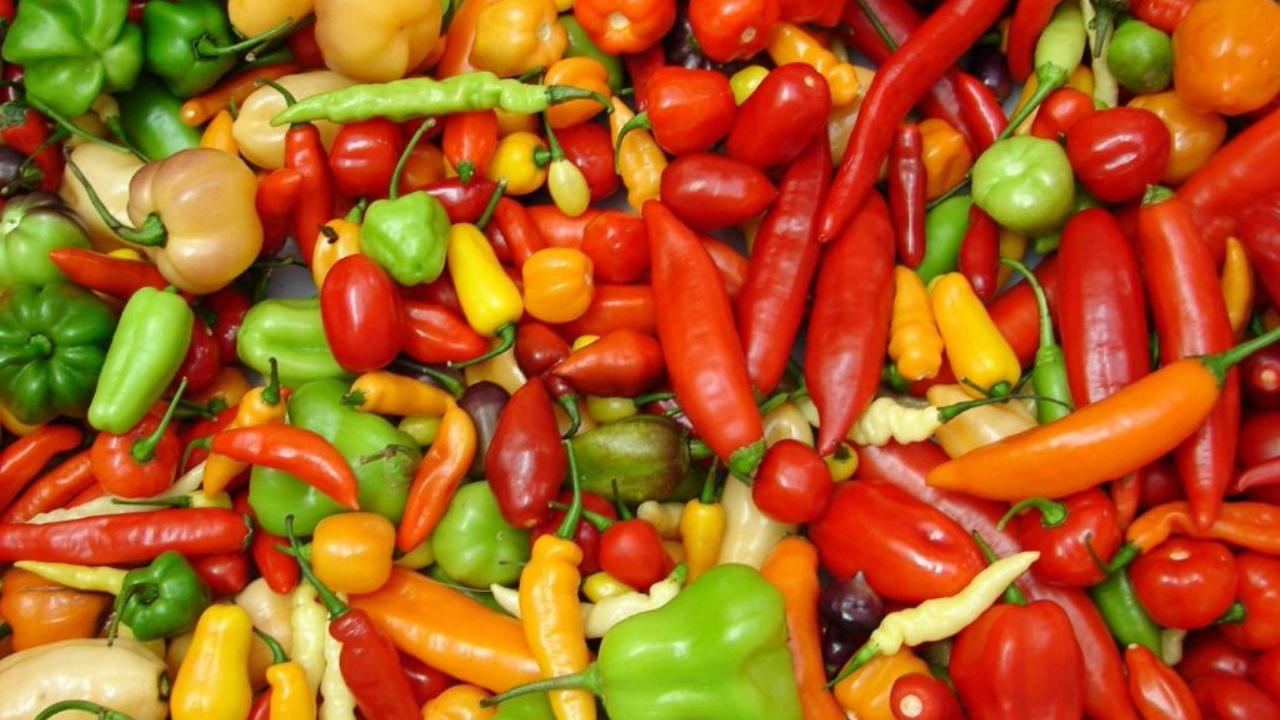Peppers are one of the most versatile and beloved ingredients in world cuisine. With a wide range of flavors and intensities, this ingredient can transform simple recipes into remarkable culinary experiences. While spiciness is a common characteristic among peppers, each type offers a unique flavor profile, color, and even texture that can enhance both savory and sweet dishes. In this guide, we’ll explore the best peppers for cooking, their characteristics, and the ideal ways to use them.
Pepper Categories
Peppers can be categorized in a number of ways, including their level of spiciness, origin, flavor, and aroma. The Scoville scale is one of the most widely used to measure hotness, classifying peppers according to the amount of capsaicin, the compound responsible for the sensation of heat.
Below are some main categories to better understand peppers and how to use them in the kitchen.
1. Mild Peppers
These peppers offer a light touch of spiciness and are ideal for those who prefer a milder flavor or are just starting to explore the world of peppers.
- Poblano Pepper: With a mild, sweet flavor, poblano is widely used in Mexican cuisine. When dried, it is called ancho and has a smoky flavor. It is perfect for stuffing, grilling, and making light sauces.
- Italian Sweet Pepper: Almost without any heat, this pepper is popular in Mediterranean dishes. Mild and slightly sweet, it can be used to make sofritos, salads and even preserves.
- Cambuci Pepper: With a mild flavor and a slight bitterness, it is very common in Brazilian cuisine. It can be used in sauces and salads, or stuffed and baked.
2. Moderate Peppers
For those who like a little more heat without going overboard, these peppers offer the ideal balance of flavor and heat.
- Jalapeno pepper: Commonly used in Mexican cuisine, jalapeño has a fresh, fruity flavor. It can be eaten fresh or smoked (chipotle) and is ideal for salsas, stuffings, and even chocolate desserts.
- Allspice: Very popular in Brazil, especially in northeastern cuisine, it has a strong aroma and moderate flavor. It goes well with fish, stews and moquecas.
- Serrano Pepper: Similar to jalapeño, but a little spicier, it's great for those who want an intense flavor without overdoing the heat. It goes well with ceviche, tacos and guacamole.
3. Hot Peppers
These peppers are for the more adventurous palate. They offer a high level of heat, but are still pleasant for most people.
- Chili Pepper: Widely used in Brazilian cuisine, especially in Afro-Brazilian dishes, the malagueta has a strong heat. It can be used fresh or in spicy sauces for feijoada, acarajé and stews.
- Cayenne Pepper: With a strong flavor and moderate to high heat, cayenne is often used in powder form to season meats, soups and sauces.
- Tabasco Pepper: Famous for the sauce that bears its name, this pepper is spicy and acidic, making it ideal for marinades, sauces and vinaigrettes.
4. Extreme Peppers
For those who love a real challenge, these peppers are at the top of the Scoville scale and should be used sparingly as the spiciness can be extreme.
- Habanero Pepper: Extremely spicy but with a fruity flavor, habanero is widely used in Mexican and Caribbean cuisine. It can be used to make intensely spicy sauces and marinades.
- Bhut Jolokia Pepper (Ghost Pepper): Known for being one of the spiciest in the world, it originates from India and has an earthy and smoky flavor. Recommended only for the brave, it is used in concentrated sauces and dishes that need an extra touch of heat.
- Carolina Reaper Pepper: Currently the hottest pepper in the world, it should be used with extreme caution. It is ideal for sauces in small quantities and for challenging those who enjoy insane levels of heat.
Tips for Using Peppers in Cooking
- Amount: Start small, especially with very hot peppers. Remember that it is easier to add spice than to remove it.
- Preparation method: Peppers can be used fresh, dried, pickled or powdered. Each form influences the flavor and intensity of the spiciness.
- Harmonization: Some peppers have fruity flavors, while others are earthy or smoky. Experiment with combining flavors to create more complex dishes.
Health Benefits of Pepper
In addition to being tasty, chili peppers also have health benefits. They contain capsaicin, which has anti-inflammatory properties and can aid digestion and metabolism. Some research suggests that regular chili consumption can even aid weight loss and improve cardiovascular health.
Conclusion
Peppers are fascinating and versatile ingredients that go far beyond just “heat.” Each type offers a unique experience of flavor, aroma, and spiciness, making them essential for anyone looking to explore culinary in more depth. Whether you’re a curious beginner or an extreme pepper lover, there’s a perfect pepper for every dish and occasion.
Discover new combinations, try recipes with different types and let your creativity guide your taste buds. After all, peppers have the power to transform the ordinary into the extraordinary in the kitchen.



